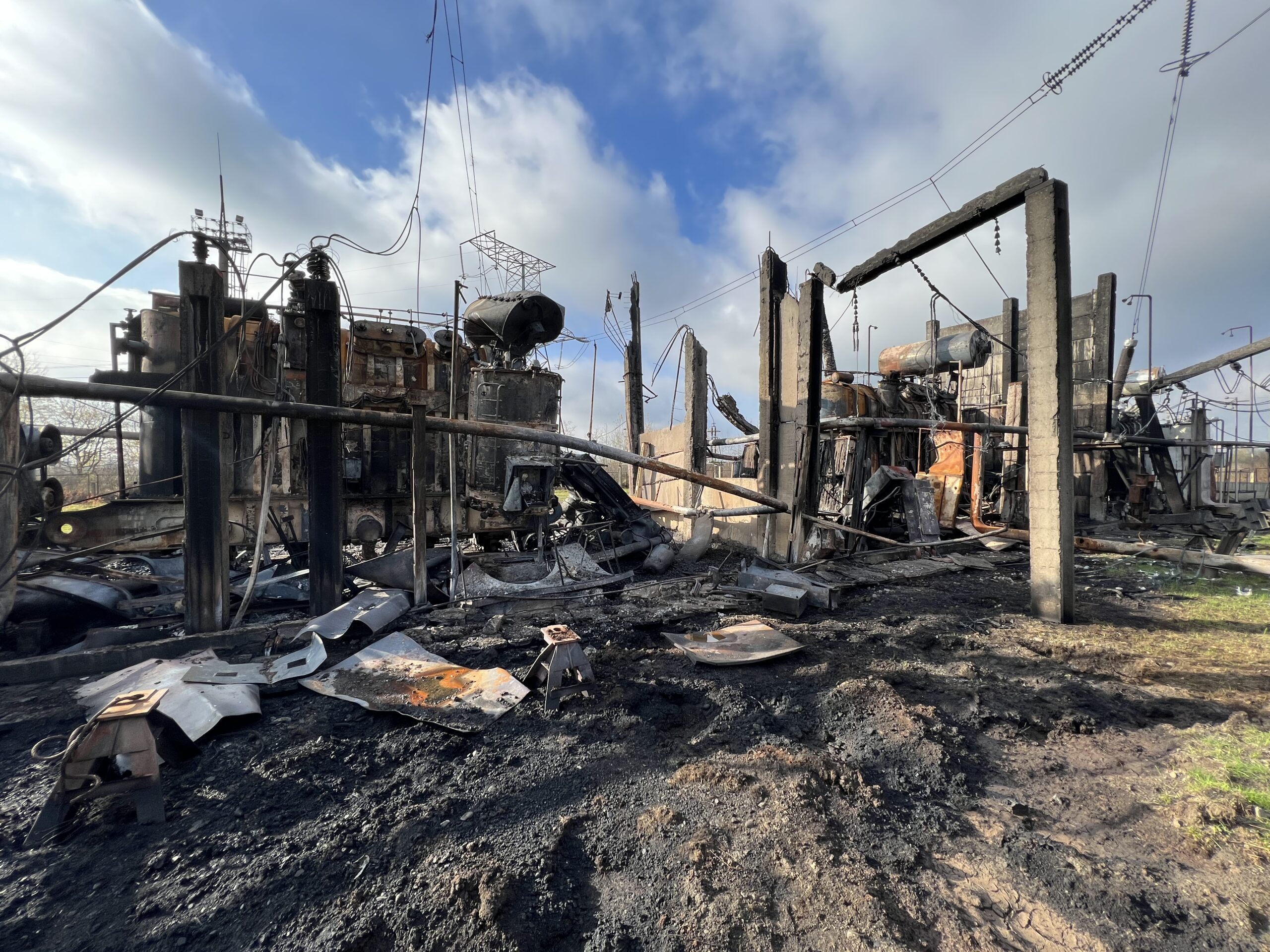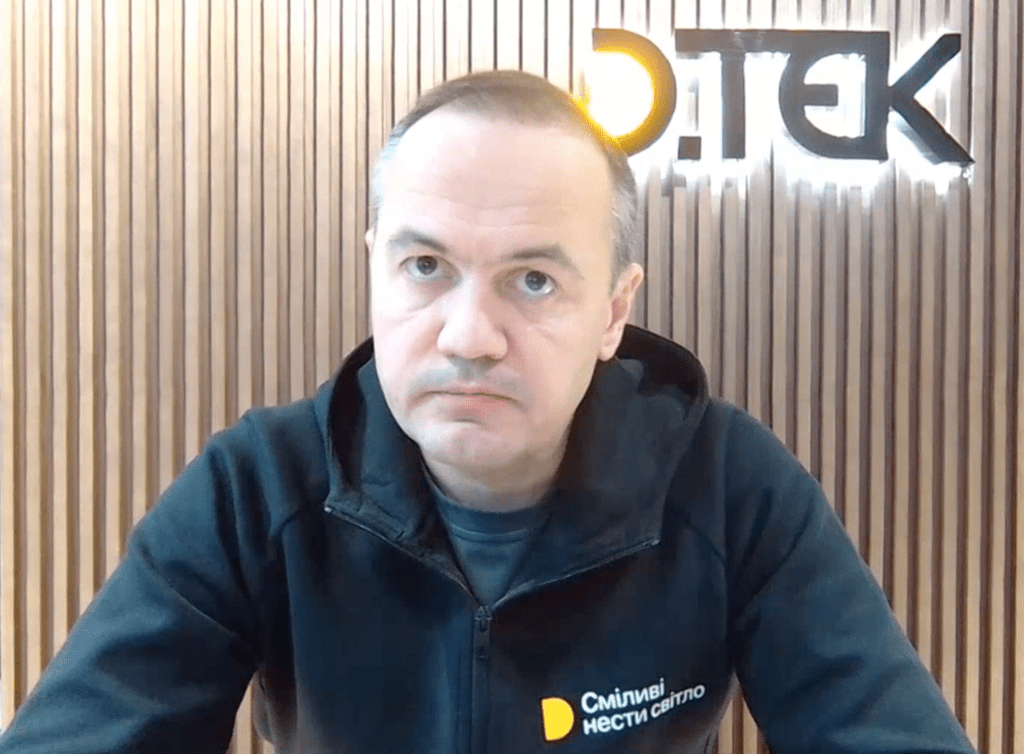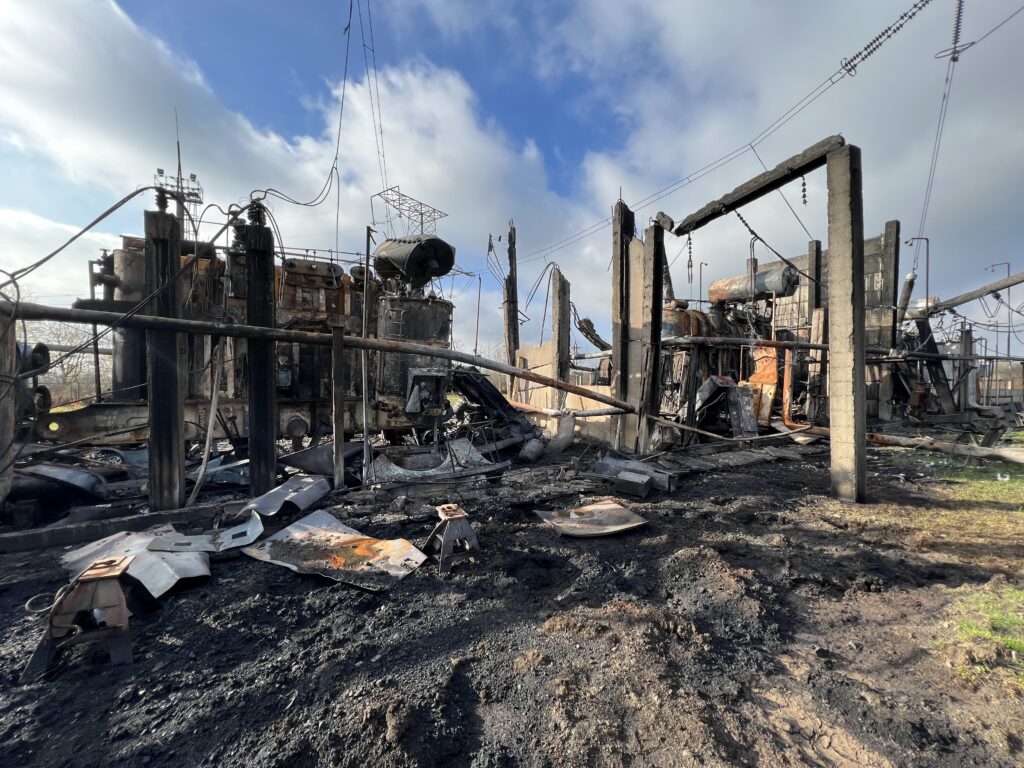Ukrainian Workers Fight to Keep Power Available for Critical Infrastructure and War-Stricken Communities

With Russian forces having damaged many power plants and power lines in parts of Ukraine, linemen and plant workers have persevered, repairing and rebuilding equipment and systems needed to keep the lights on and critical facilities in operation. But the job is not easy, and much of the country's power generation capacity is currently unavailable.
Today, we have 17 GW of capacity on control territory of Ukraine, out of which, about 45% is damaged, either as a result of shelling or as a result of situations where we cannot bring coal or gas for different reasons," DTEK CEO Maxim Timchenko said during a press briefing held on Jan. 25. So, talking about thermal power generation, today, we have 2.4 GW of capacity available, which is 15 power units, and 7 GW is not available, which consists of 32 power units."
 DTEK CEO Maxim Timchenko addresses members of the media during an event held on Jan. 25, 2023. Courtesy: DTEKRussia Targets Power Plants, Workers in the Line of Fire
DTEK CEO Maxim Timchenko addresses members of the media during an event held on Jan. 25, 2023. Courtesy: DTEKRussia Targets Power Plants, Workers in the Line of FireTimchenko said a change in Russian tactics was at least partly to blame for lost capacity. They started targeting physical destruction of energy infrastructure in October, but primary targets of them was power grid and substations, and all other equipment really related to connection of power stations to other places and cities where this power is consumed," he explained.
This year, and especially the recent attack on 14th of January, was specifically targeted to destroy power generation," Timchenko said. Now, the primary target was thermal power generation, and you know that we are the major player in thermal power generation in Ukraine at the moment. So, it was massive destruction of two of our power stations. And just to remind you, today, we operate six power stations on controlled territory, providing about 80% of capacity in thermal power generation and about 25% of capacity in total production in Ukraine."
 The war has resulted in significant damage to power systems in some parts of Ukraine. This image was taken at one of DTEK's power stations, the location of which is not able to be disclosed due to martial law restrictions. Courtesy: DTEK
The war has resulted in significant damage to power systems in some parts of Ukraine. This image was taken at one of DTEK's power stations, the location of which is not able to be disclosed due to martial law restrictions. Courtesy: DTEKDTEK employs about 60,000 people. Its companies are involved in coal and natural gas extraction and electricity generation from wind, solar, and thermal power plants, among other things. The war has notably taken its toll on the company's workforce. Timchenko reported that 133 DTEK employees have been killed to date as a result of the fighting in Ukraine.
Bolstering the Power SupplyOn Jan. 26, Karpowership, a company based in Istanbul, Turkey, that provides floating electricity solutions around the world, announced it had signed a memorandum of understanding (MOU) with state-owned trader JSC Energy Company of Ukraine (ECU). The deal will enhance electricity supply cooperation" and fast track the use of floating power stations" to help alleviate the energy crisis in Ukraine. Karpowership expects to deliver up to 500 MW of electric capacity to the Ukrainian grid via Powerships, which will most likely be moored offshore in Moldova or Romania, and fed into Ukraine's system via transmission lines. Karpowership and ECU must still engage with Moldovan and Romanian authorities to assess the viability of the two options.
"Karpowership is delighted to work with ECU to ease Ukraine's power crisis," Zeynep Harezi, Karpowership's Chief Commercial Officer, said in a statement announcing the agreement. "Powerships are a fast, reliable, and flexible solution to the nation's electricity shortages, and we are ready to support Ukraine in getting the energy it needs as soon as possible."
 Karpowership Chief Commercial Officer Zeynep Harezi and ECU Chief Executive Officer Vitaly Butenko sign the MOU. Courtesy: Karpowership
Karpowership Chief Commercial Officer Zeynep Harezi and ECU Chief Executive Officer Vitaly Butenko sign the MOU. Courtesy: KarpowershipKarpowership says its fleet of 36 Powerships can be connected directly to electricity grids, leveraging existing infrastructure. The company claims the work can be done in less than 30 days. It says, Powerships are cheaper, quicker, and more flexible than land-based power facilities and leave a minimal environmental footprint when decommissioned. They are simply unplugged and re-deployed wherever they are most needed."
Karpowership's vessels are multi-fuel enabled, operating on either liquefied natural gas, low-sulfur fuel oil, or biodiesel. The company says Powerships are delivered with all the infrastructure they need, and that there is minimal disruption to local communities onshore.
Ukraine's energy system has suffered 12 massive Russian attacks, resulting in damage to its power generation infrastructure and electricity shortages. While the war continues, building new power units to recover lost or damaged generation capacity is not a feasible option and we need to look for innovative solutions to the current crisis," ECU CEO Vitaly Butenko said in a statement.
"Karpowership technology allows for rapid deployment of new power generation capacity, which will be transferred to the Ukrainian grid. We believe this can create a regional paradigm shift for solving Ukraine's energy crisis while the nation's infrastructure is being subjected to Russian attacks," he added.
Coal and Gas Supplies Are Sufficient, Price Gaps Limit Power ImportsUkraine's power problems are not fuel related. As of today, we maintain pre-war level of coal and gas production," Timchenko said. Today, Ukraine has more than one million tonnes of coal in stock. So, basically the problem is not in coal itself, but in logistics-how to bring this coal to power stations," he said.
The situation concerning natural gas is also fine. We have quite healthy stock of gas at the moment," Timchenko said. I don't want to give you too many numbers for obvious reasons, but I don't see any issues today." He explained that the main problem was available power generation capacity, noting that DTEK is doing everything possible to increase the number of units available.
Timchenko also noted that Ukraine could be importing more power from the European Union than it currently does, but the cost is a hinderance. In Ukraine, we still have a wholesale price of about 85/MWh compared with the price in neighboring countries of 130, 140, up to 200/MWh. So, this gap is not close yet," he said.
Power Restoration Continues, Supplies Limited in Some AreasDTEK reports power restoration activities on almost a daily basis. For example, on Jan. 25, DTEK Donetsk Grids reported that emergency and repair crews, with the permission of the military, have restored electricity to homes of residents of 10 settlements that had been de-energized due to shelling. This work was said to have restored power to 1,631 families. The company said DTEK specialists commence repairs immediately once the shelling subsides and the military provides a permit for work performance.
The Donetsk region remains an area of active fighting. According to the Ministry of Defense, Russian forces are actively fighting around Bakhmut, Avdiivka, Lyman, and Novopavlivka. DTEK reported that 96 settlements in the Donetsk region remain without electricity in those areas where the company does not have access to work.
Meanwhile, in the Dnipropetrovsk region, power cutoffs are underway due to shortages after the attacks on Jan. 14 that Timchenko mentioned. DTEK said NPC Ukrenergo sets electricity consumption limits for Distribution System Operators in order to maintain reliable operation of the energy system. In the past week, the daily limit for electricity consumption in the Dnipropetrovsk region has been set to about 1,180 MWt, which is said to be about 53% of the entire region's power need under normal operating conditions. The night limit has been set to an average of 1,155 MWt.
-Aaron Larson is POWER's executive editor (@AaronL_Power, @POWERmagazine).
The post Ukrainian Workers Fight to Keep Power Available for Critical Infrastructure and War-Stricken Communities appeared first on POWER Magazine.